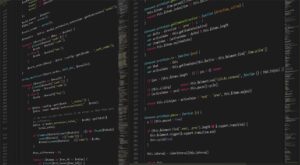In the vastness of software engineering, there is an immense loss of resources every year due to peaky written codes. When we talk about clean codes, we can say it’s subjective, easy to write, read and maintain. Every web developer has a personal take on this. Clean code is very important to understand and make changes. Various ideas are considered the best implementation in the software industry, but we do not have a different definition.
The word “clean” has been in the recent trend. People nowadays are more bent towards clear things as there are already lots of complications in everyone’s everyday life. Clean codes shrink the guesswork and chances to misunderstand completely. Writing code that is understandable, maintainable is a skill every developer should master.
Your codes must be easy to understand at every level:
- The application’s execution flow,
- the role and responsibility of every class,
- Part of every method, purpose of variable, and expression.
It would be best if you always put extra effort and time into emphasizing the code architecture. Your code is designed in a manner that it must have the ability to elongate and reshuffle quickly. The functionality can be achieved when a developer practice changing the codes without breaking the present functionality. For easy to change code, it’s vital to get sure about the classes and methods with:
- Sole responsibility,
- Clear and crisp public APIs,
- Predictable and works as per expectation,
Codes are easily testable with easy-to-write unit tests, and tests are easy to understand and change.
Why Should We Care About Clean Code
Clean code is something we should care about because these codes are not just written once and forgotten. There are times when you need to understand the code to work on it efficiently. Here it won’t be wrong to say, and writing codes are not only intended for computers but humans as well. While writing a code, you are helping your future employees, your co-workers, and your community. With clean codes, you are reducing the cost of maintenance, making it easy to fix bugs. We can say that you are making your code
What are the principles of clean code?
Following are the top principles of clean coding that you must know:
- Magic numbers: magic numbers are assigned to a code with no clear meaning. They are for specific purposes, and here we do not set significant variables to the code.
- Deep nesting: there are times when developers use nesting loops, which are complex to understand. To make your loop clear, you can use loops in separate functions. In this way, you can write nested loops as per your requirements. Do not forget to keep your codes clean, less repetitive, and easy to read and reuse.
- Elude large functions: we tell you to separate large parts into many parts to make your code easy to understand, clean and reusable. Individual processes in the codes can be repeatedly used in the application.
- Repetition of codes: repetition of code indicates repetition of blocks in the application. This means that part needs to be extracted into the function.
- ariable naming: variable, identifiers, and function follows camel case for coding standard. According to this, the name sound begins with a small, and the first letter of every name must be uppercase.
- Elude one letter name variable: on the letter, variables are considered bad for coding. You can use variables with letters in a loop but avoid using it as a variable name.
- Capitalize constant values: this is another principle a developer must follow. You must use complete capital names for continuous. All letters must be uppercase with an underscore to separate all the letters.
What are the benefits of using Clean Code Java?
- Clarity: developers must use clear codes so that it becomes easy to fix bugs and add features for future employees.
- Maintenance: we can say writing codes are easy as compared to reading and understanding. By writing an easil readable code, you are reforming 90% of the time while reading the code. This strategy is cost-efficient. When compared to the alternative approach of writing code without making it readable.
- Easy to test: automated tests generated while you are writing code. These tests are efficient ways of improving the quality of the codes, reducing software defects, and improving velocity terms. These factors have a massive effect on the return on investment of a software company.
- Consistent: When you write a code, you intend to make it easy to read and find. You are using irrelevant names for your variable name. This function will create trouble for you in the future. Using elements that are essential and standard rules helps a lot. It creates uniformity and further makes it easy to come back and work on the project.
- Cost-efficient: by using the above-listed advantages, you are leading towards cost efficiency. You must use the proper time to build quality working software. By creating a clean code, you increase the value of your software. It also reduces the cost of creating and maintaining the software.
What Is The Difference Between Code And Pseudocode? How To Write It?
Code is defined as a step-by-step procedure that uses structural programming languages. It excludes the language-specific syntax code related to the object it represents. Codes can be written easily using natural language, flow charts, etc.
Pseudocode can be defined as a programming algorithm that uses structural conversions. These codes work, skipping the subroutines and language-specific syntax while writing code for the software program.
There are times when algorithms are presented through pseudocode. These codes can be easily read by the program developer, who is already familiar with the programming language.
While writing pseudocode, several structures are included: while, if-then, else, repeat-until, for, and case as high-level language. Codes and structures used to write pseudocode include languages such as C, Lisp, FORTRAN, etc.
What Is Java Obfuscation? How To Obfuscate A Java Application?
Java obfuscation means to design something complex to understand. This programming software is used to protect abstract property or trade information. It prevents hackers from using proprietary software programs to grab that information.
Obfuscation uses complex roundabout projects and logic that makes the project difficult to understand. The primary goal behind using this program is to distract the user with a complex syntax that obstructs them from determining the real content of the information. It is used to fool other antivirus and programs that depend upon digital impressions to predict the code. It is not about changing the factual content but making the presentation and methods of the programming codes complex. This does not make changes to the working or end output of the program. The obfuscation program is near impossible to interpret with human eyes.
There are various methods used to create a layered effect. These programs are written in software languages such as C and java. This helps create a starting level of instruction that is easy to read and use. C++ is much more difficult to obfuscate as it is related to machine code which is complex for people to work with.
Final thought
Everyone holds different definitions for clear codes. Clean codes are subjective for every developer, and several principles consider best practices while executing these codes in the industry and the community. Sanitary regulations simply aim to design codes that are easy to read and understand by the developers. Clean codes can be easily altered for any program changes without breaking the program’s functionality.
Also Read Some Intersting Information About Everything You Need To Know About Launchcode Miami
How useful was this post?
Click on a star to rate it!
Average rating 5 / 5. Vote count: 3
No votes so far! Be the first to rate this post.




